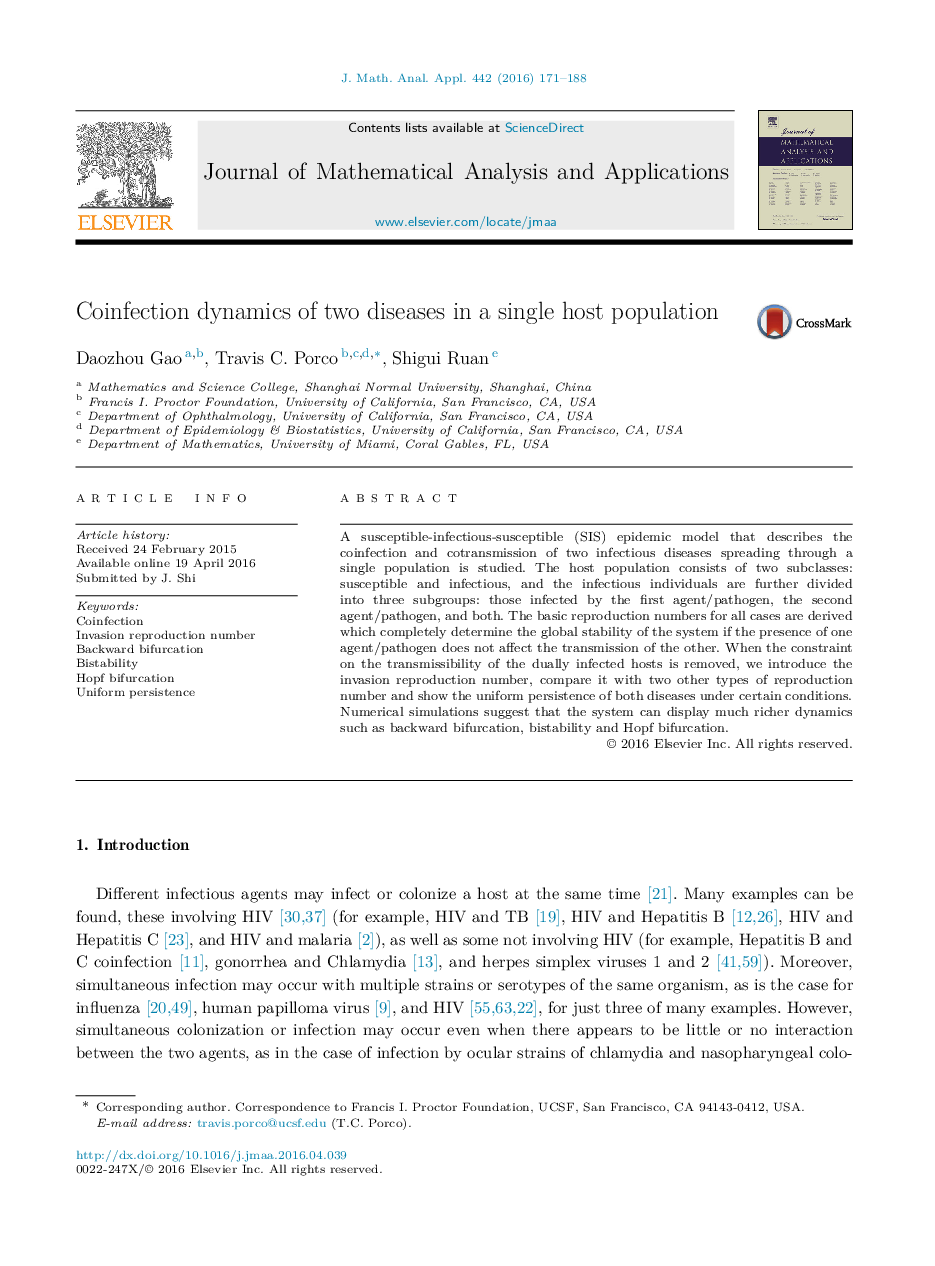| Article ID | Journal | Published Year | Pages | File Type |
|---|---|---|---|---|
| 4613960 | Journal of Mathematical Analysis and Applications | 2016 | 18 Pages |
A susceptible-infectious-susceptible (SIS) epidemic model that describes the coinfection and cotransmission of two infectious diseases spreading through a single population is studied. The host population consists of two subclasses: susceptible and infectious, and the infectious individuals are further divided into three subgroups: those infected by the first agent/pathogen, the second agent/pathogen, and both. The basic reproduction numbers for all cases are derived which completely determine the global stability of the system if the presence of one agent/pathogen does not affect the transmission of the other. When the constraint on the transmissibility of the dually infected hosts is removed, we introduce the invasion reproduction number, compare it with two other types of reproduction number and show the uniform persistence of both diseases under certain conditions. Numerical simulations suggest that the system can display much richer dynamics such as backward bifurcation, bistability and Hopf bifurcation.
